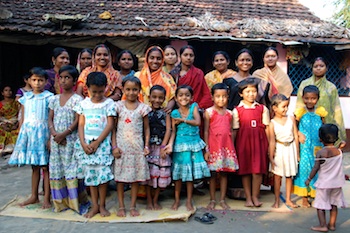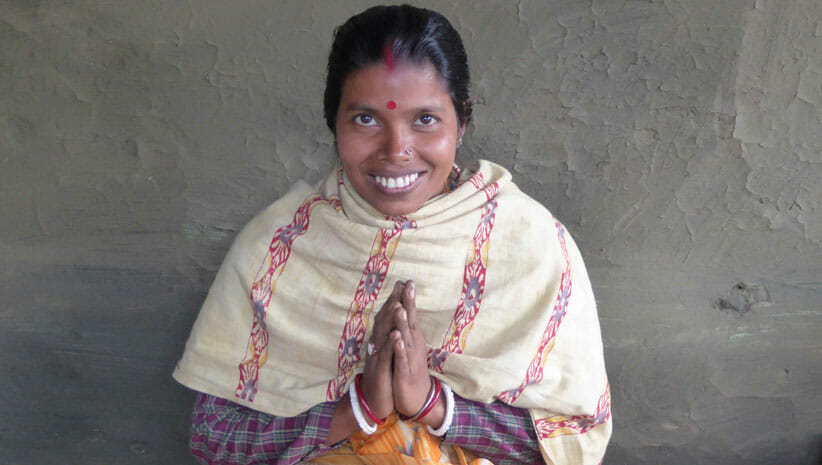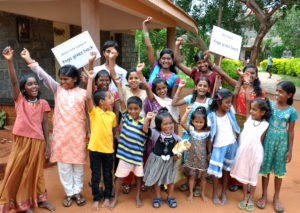From Posture To Power: Microcredit Changes Lives On Both Sides of the Ocean
We can talk about making change. But affecting real change in the world comes from impacting the lives of individuals. It comes from empowering people to be independent and able to make a living on their own while at the same time being fully integrated in our interdependent global community.
Sometimes it takes something that seems to be radical to make this change, but these shifts can be deceptively small. They can be even as small (or as large) as the cost of a Los Angeles Yoga class.
What is Microcredit?
How could this be? In the practice of microcredit, lending seemingly small amounts of money to small-scale entrepreneurs allows them to succeed and change their circumstances. This is the fundamental basis of microcredit’s transformative power; it’s a revolutionary concept in finance. This practice shifts the emphasis from financial transactions being focused only about large loans and large scale businesses, which are out of reach of many one-person operations, institutions and organizations – to lending practices that actually make a positive difference in a person’s life.
Microcredit practices based on social justice and empowerment operate through a combination of small-scale loans based on trust and community support, with structured repayment plans and programs that encourage savings. In these situations, people actually have the opportunity to solidify long-term change in their lives.
Microcredit Initiatives and the Nobel Peace Prize
In 2006, economist Dr. Muhammad Yunus and the institution he founded, the Grameen Bank, were awarded the Nobel Peace Prize. This award was in recognition of their revolutionary efforts to create this microcredit model, support sustainable economic practices, and provide an alternative to what were exploitive norms. When a person is caught in a cycle of poverty, they may become trapped in the system, particularly since large banking institutions have historically ignored people without assets or credit histories, who are just starting out and who may not have already proven themselves.
A New Approach to Lending
Most banks prefer to lend large sums of money that represent a greater profit margin and are set up only for large loans in order to make a profit themselves. And even making it more challenging, people at the bottom of the economic scale worldwide have had to rely on moneylenders charging usurious terms and interest rates to obtain funds to plant the next crop, buy inventory of new equipment, or upgrade a business in any way. Institutions such as the Grameen Bank and their affiliates are offering another approach. It’s one that has significantly impacted millions of people.
As Dr. Yunus described in an exclusive interview with Yoga Gives Back in May, 2009, “We started in 1976, and today within Grameen Bank in Bangladesh, eight million people borrow micro loans, ninety-seven percent of them women.” This represents an enormous potential for change and empowerment that just did not exist on a large scale in this form prior to 1976.
There is a social cycle in economics, and Dr. Yunus explained this: “Poverty is not inside the person. Poverty is forced from outside. Poor people are as capable [a] human being as anybody else. They have the same power and energy, same potential. But they are denied such facilities. They cannot express themselves. Money is one of the most important items missing in their lives. You need a dollar to catch a dollar. You cannot catch a dollar with an empty hand.”
“So, that first dollar, nobody has given to her. So she remains dependent on someone else. She has to be hired, to slave; she has to work to make food available on the table. What we have done, we have put that first dollar into her hands as a banking proposition. Conventional banks never come to the poor people. They go to rich people to make more money. The person who does not have a dollar – she cannot get it. So we did it. We did it in a way that is affordable to her. Because we do not insist on collateral. There is no collateral.”
The Strength of Microcredit
While that may seem like a radical concept, the Grameen Bank has proven that their success is much more than ideological. Dr Yunus cited statistics for us, “The repayment rate is almost 100%, without collateral or anything. This is the strength of microcredit which is now spread all over the world. There are by now at least 150 million borrowers in the world today. Bu it is still very small comparing to the need. We need more microcredit organizations in the world so that more people can be reached.”
Yoga Gives Back and Microcredit
Yoga Gives Back is a 501(c)(3) nonprofit organization begun in LA, with the goal to provide a way for Western Yoga practitioners to give back to India, the birthplace of Yoga, which has given us so much. We’re heeding Dr. Yunus’ call to reach more people through expanded opportunities for and awareness of microcredit and have targeted India and Indian families, women, and would-be entrepreneurs, who would be otherwise stuck in the cycle of poverty that Dr. Yunus described. Yoga Gives Back supports microfinancing operations in India, through the Grameen Foundation, headquartered in Washington, DC. Donations go directly to Grameen Koota, Bangalore, South India and our YGB awareness campaign focuses on the real stories of how poor women are changing their lives with small loans from Grameen Koota.
Grameen Koota was started by visionary teacher and philanthropist, Ms. Vinatha M Reddy in 1999, who learned about Nobel Peace Recipient Dr Muhammad Yunus’ microfinancing and immediately began exploring ways of replicating his work in her hometown. In 2000, she started providing small microcredit loans, averaging $25.00 a month, to fifty local women. Today, Grameen Koota’s work is reaching out to over 280,000 women in Bangalore, Mysore and many areas of Karnataka state, in South India, making real impact on these women’s lives as well as on the local economy.
 The Inspiration for Yoga Gives Back
The Inspiration for Yoga Gives Back
The Los Angeles-based Yoga Gives Back has a worldwide reach. It began out of the inspiration and dedication of my Yoga mentor Joel Bender and me. Our group started growing daily and our mission is shared by a expanding and loving Yoga community.
When I was growing up in Japan, which is a very middle-class society, I had never experienced or seen any real poverty. Especially growing up in Tokyo in 1960s and 1970s, when Japan’s post-war economic miracle was taking place. Then, I had a chance to live in Brazil in the late 1970s for two years. As a teenager, I saw the divide between poverty and wealth. I saw the reality of the real slums, kids on the streets begging every time you stopped the car at the traffic light, all very much like India. Social injustice hit me hard.
A Belief in Social Entrepreneurship
Once I started Yoga practice and feeling my life being so enriched by it, I felt a need to use my resources to help others. I was producing a documentary on Social Entrepreneurship and learned about microfinancing. I shared this information with Joel who had been looking for the way he could give back to India since his first visit there. We teamed up.
When I think about the growth of Yoga Gives Back thus far, I give a lot of credit to the entrepreneurship and volunteer spirit of Americans, who willing to embrace and support a new grassroots campaign like ours.
A Life Changing Story of Microcredit: Jayashree
Jayashree lives in the suburbs of Bangalore and is married and the mother of two children. We visited her at her humble dirt floor one room home for the first time in 2007. We were touched by her warm smile and most generous hospitality, serving us hot tea and cookies.
Jayashree was born into a very poor family in Bangalore. When she was a child, her family’s financial situation became so severe that she had to drop out of school and work at a garment factory. She toiled throughout her childhood and after she got married at fifteen, her meager earnings had to support her ailing in-laws. She had two children. Her husband’s rickshaw business was not enough to pay her sons’ education or secure food for the family.
Jayashree the Entrepreneur
In 2007, Jayashree learned from her neighbors about Grameen Koota’s microcredit program and applied for her first loan. She was granted a first loan of 7,000 rupees ($175). Jayashree immediately bought her husband’s auto rickshaw. Owning their own rickshaw business increased their income significantly.
Jayashree was able to pay back her entire loan in one year and became eligible for her second loan in 2008. Having proven her diligence, her second loan amount doubled to 15,000 rupees ($375). This time, she bought a sewing machine and started stitching bags. The family’s earnings have now tripled and she is earning 150 rupees ($3.75) a day. In addition, she opened a small shop next to her house to sell her products which is earning her an additional 100 rupees ($2.50) a day.
She is sending her elder son to a medical school. Her son dreams of becoming a doctor and thanks his mother’s business for providing his education, their own home and daily food.
Kayoko Mitsumatsu is a documentary filmmaker and avid yoga practitioner. She is the Founder and Executive Director of Yoga Gives Back: yogagivesback.org.


